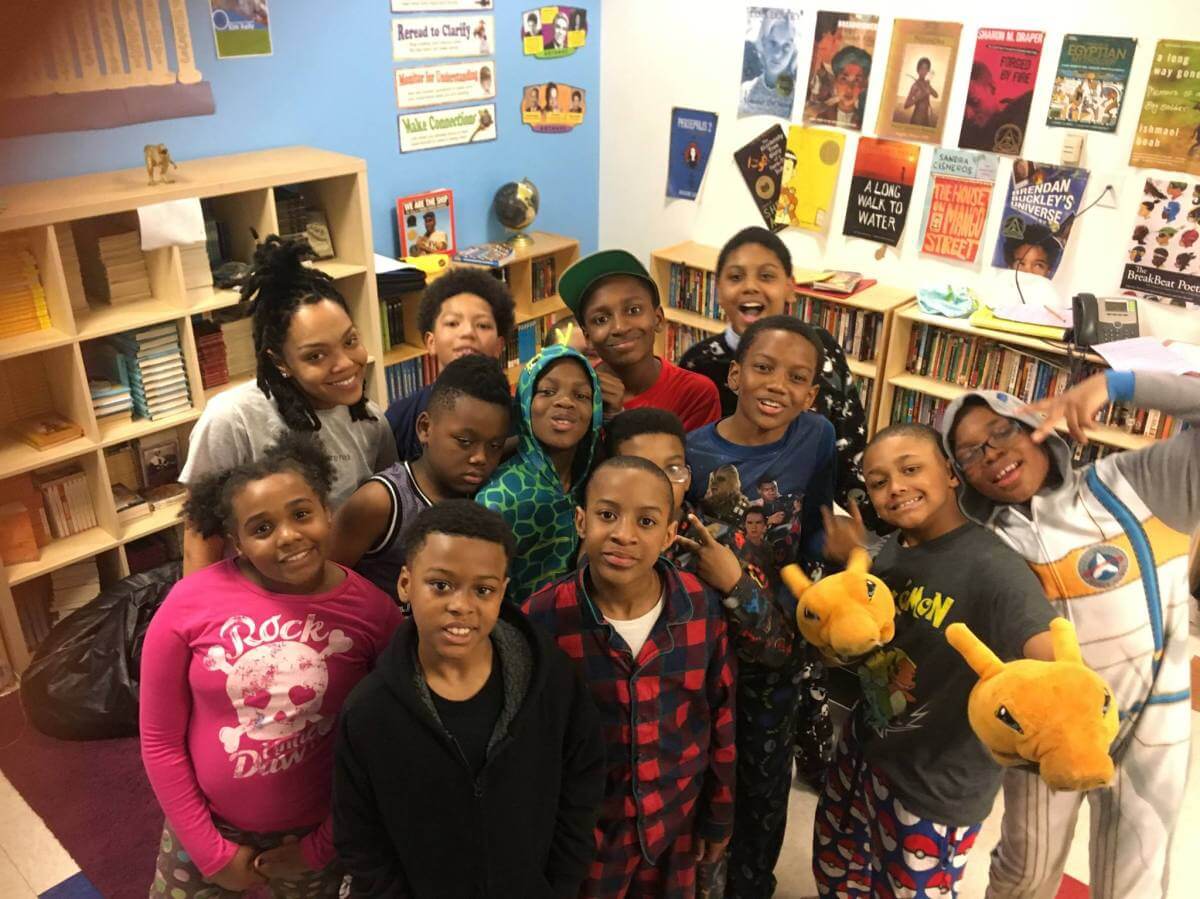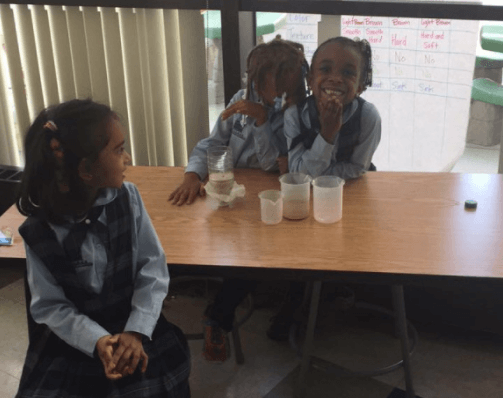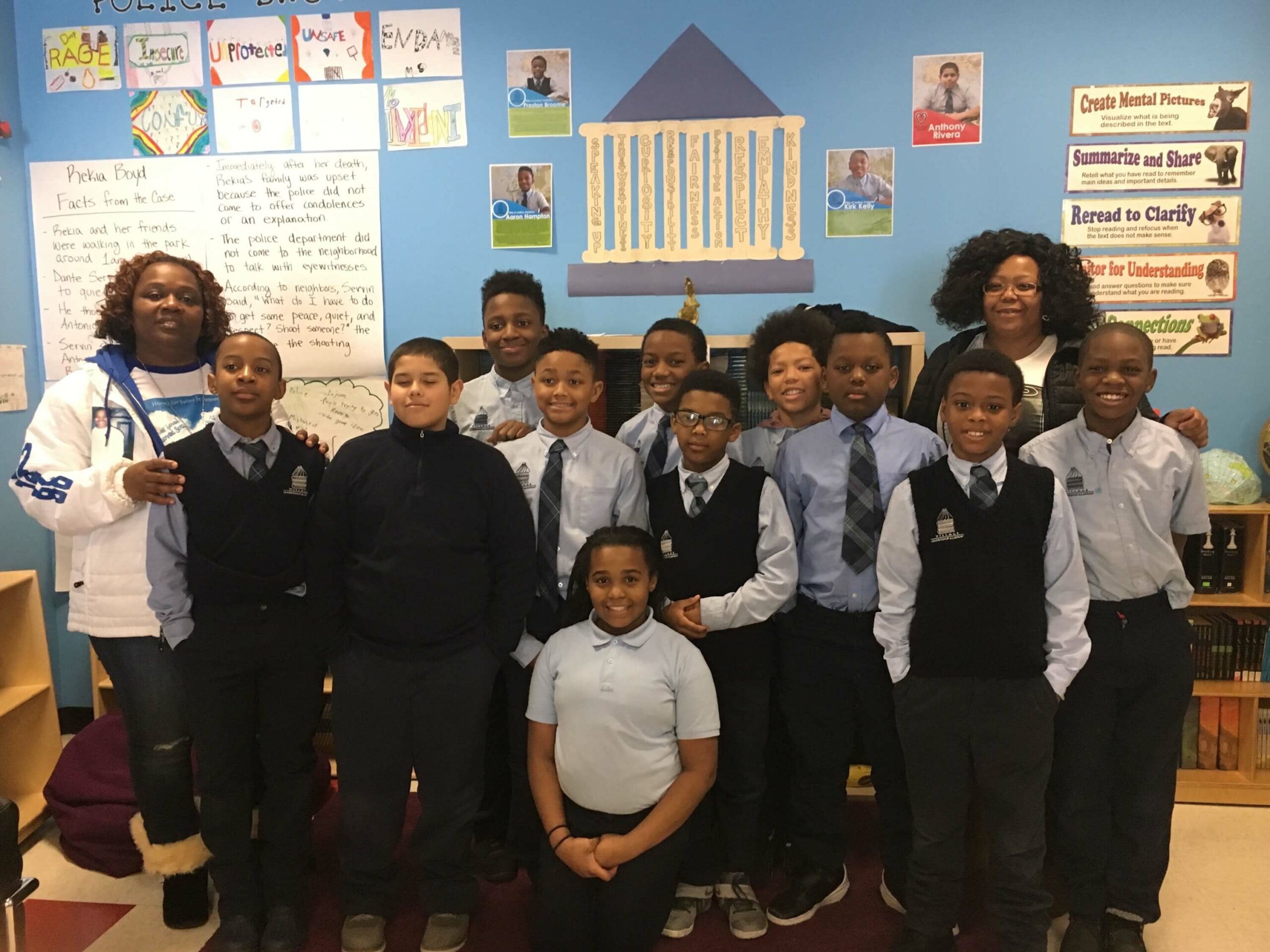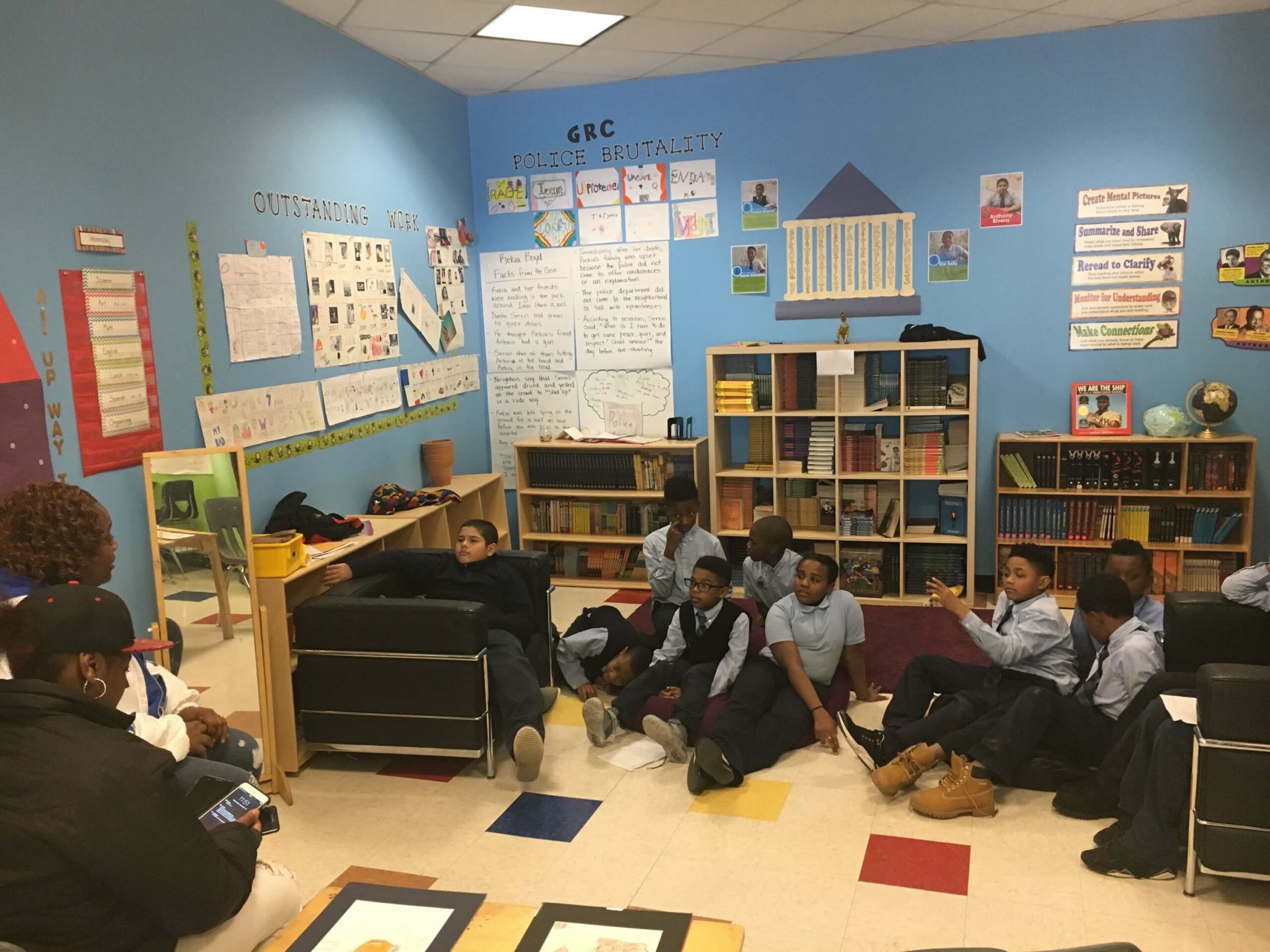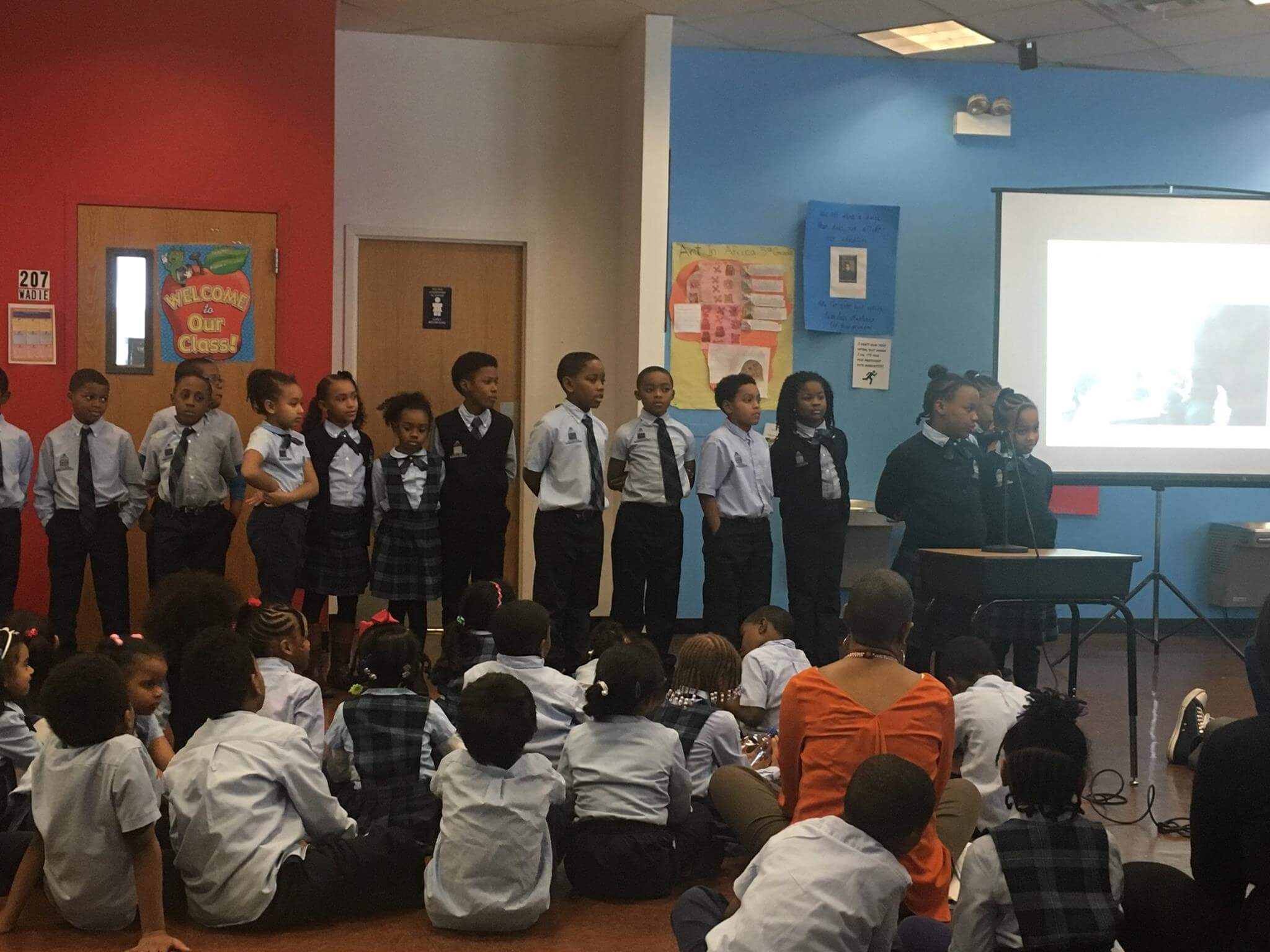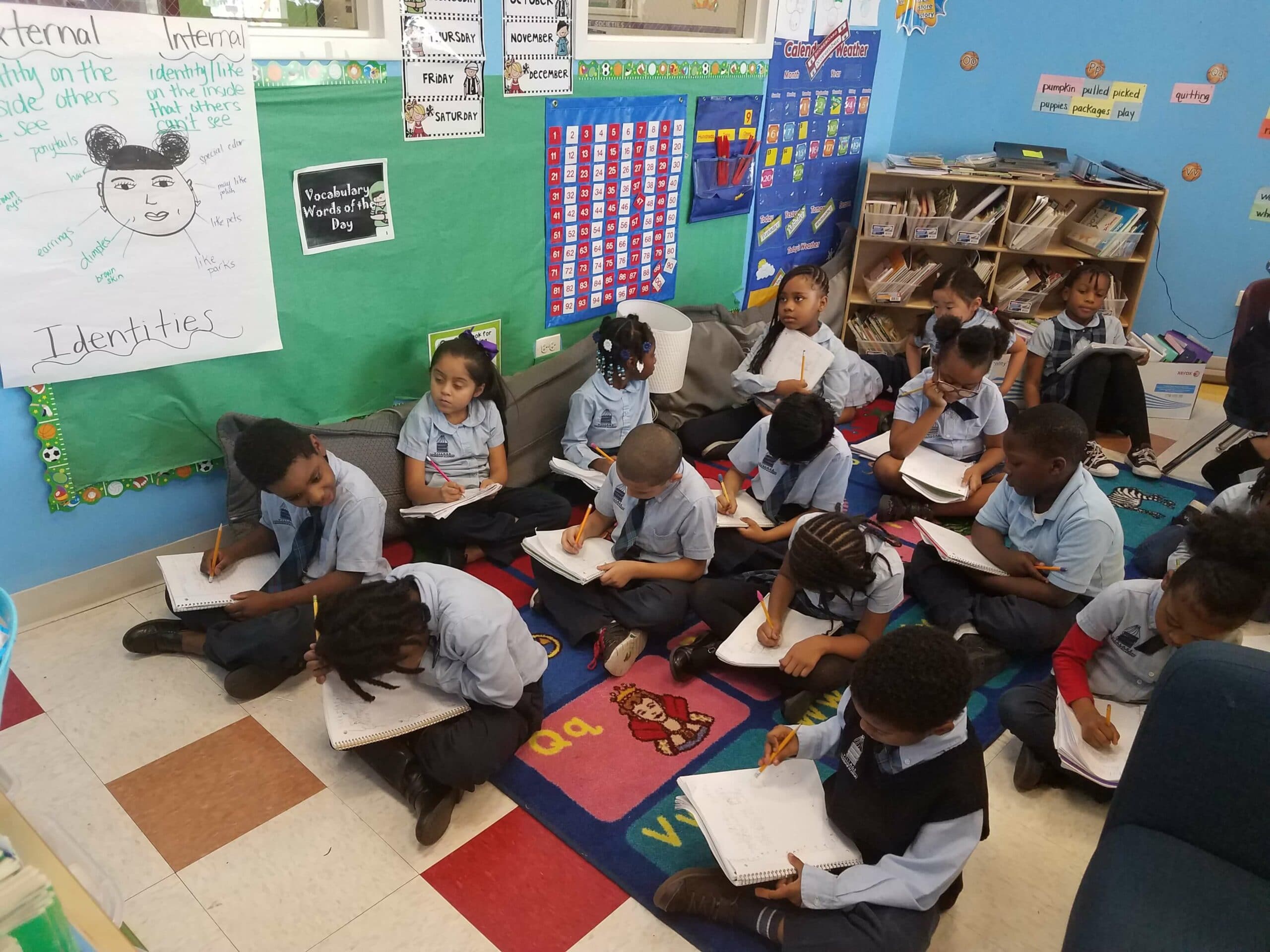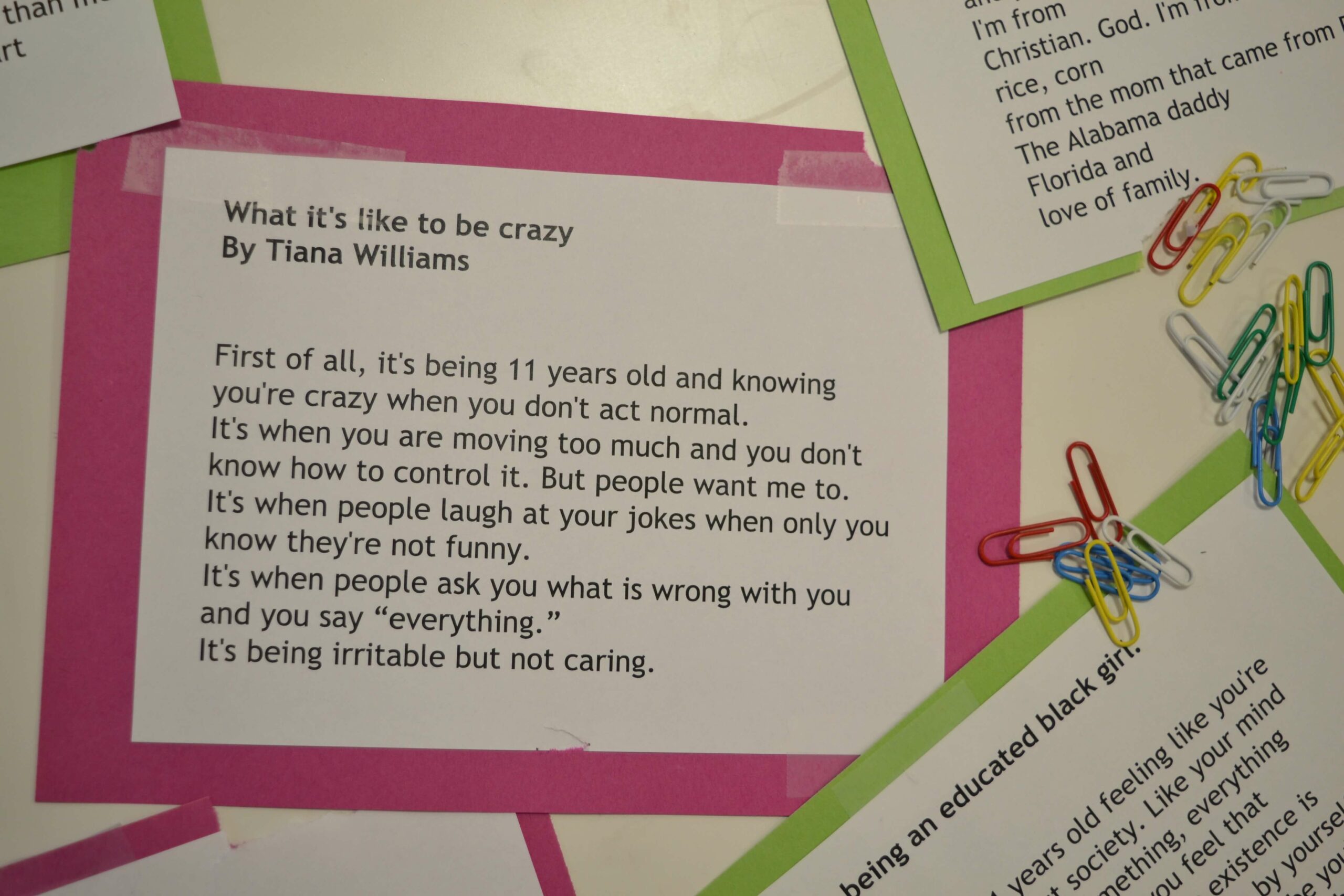Blog
Social Justice in Primary School
By: VLA Teacher, Ashley Dacio
Yes, the kindergartners “get it” and actually imbibe the concepts.
To make this happen, teachers have to be innovative educators who draw knowledge and inspiration from various sources including, but not limited to, social media sites like Twitter.
Enter Village Leadership Academy’s “Twitter Chats.
“Education either functions as an instrument which is used to facilitate integration of the younger generation into the logic of the present system and bring about conformity or it becomes the practice of freedom, the means by which men and women deal critically and creatively with reality and discover how to participate in the transformation of their world.” – Paulo Freire
Last Wednesday, we hosted our first “Twitter Chat!” “Twitter Chat,” what is that? Teachers from our school, Village Leadership Academy, and other teachers from around the country and the world at large, get together on scheduled Wednesdays to discuss issues and topics of mutual interest within the field of education.
Our specific topic of discussion had to do with the implementation of the Social Justice curriculum within our school. It also provided an opportunity to share ideas, as well as learn from the experiences of other educators.
The central focus of our Social Justice curriculum is our students. Children seek to make sense of the world around them by asking questions about the things they notice and see. The Social Justice curriculum that we teach seeks to help students in this quest of discovery and interrogation. To this end, we came up with the following questions for our “Twitter Chat:”
- Introduction: Name three essential components of a robust Social Justice curriculum.
- Why should social justice curriculum be grounded in the lives & real world experiences of students?
- Should teaching students to pose critical questions about the world be integral to Social Justice curriculum?
- How do experiential and participatory learning models/processes contribute to Social Justice frameworks?
- In what ways can Social Justice curriculum foster student action, autonomy, and agency of ideas in primary grades?
- To what extent should community building be intrinsic to teaching Social Justice to primary school students?
- What are the best ways to integrate Social Justice ideologies across the curriculum?
- How can we teach in ways that are humanizing to ourselves and to our students within Social Justice curriculum?
- Closing: What are the roles and responsibilities of educators at this particular moment in history?
We set the tone of the discussion with our definition of Social Justice as “Promoting a just society by challenging injustice and valuing diversity.” The chat took off right away, and every participant seemed to be upbeat and ready to discuss the topic of the evening, “Teaching Social Justice in the Primary Grades.”
After the initial introductions, the first question, which asked participants to identify three components of a Social Justice curriculum that they considered essential, was posed. Responses included “passionate teachers, critical students and focus on community,” “relevant, relatable, and meaningful to all students,” “reflective, engaging, and innovative,” and “critical thinking, non-traditional perspectives and provision for students to identify and make change in their communities.” Wow!
That sounds like an enormous undertaking! On the other hand, can you imagine the immense impact of a Social Justice curriculum with all of these components? This is exactly what Village Leadership Academy aspires towards through the blossoming of its Social Justice curriculum. Participants on the forum agreed that there is a need for teachers to ground the curriculum in the lives of students.
Here are some responses that were shared: “Social Justice needs to be grounded in students’ real world experiences to foster a safe, inclusive, and empathetic community…,” “We tend to infantilize young people in primary school not recognizing their connections to the world and issues happening around them,” and “The Social Justice curriculum should be rooted in empathy, empowerment, agency and connections to real life.”
Indeed, these perspectives are worth sharing. Our “Twitter Chat” was an evening that seems to have been enjoyed by all—one participant summed it up best when she tweeted, “This discussion is much needed. I am an educator, advocate for children and families, [and] servant leader. Glad to be here!” And we were certainly glad to host.
Consider the above as a teaser. To peruse the entire chat, please go to sfy.co/h0JTW .
In conclusion, let’s reflect on the words of Paulo Freire, who admonished:
“The teacher is of course an artist, but being an artist does not mean that he or she can make the profile, ….can shape the students. What the educator does in teaching is to make it possible for the students to become themselves.”
Enroll Now
Discover a partner in the future of your child. Enroll your scholar for the 2021-2022 school year today!
